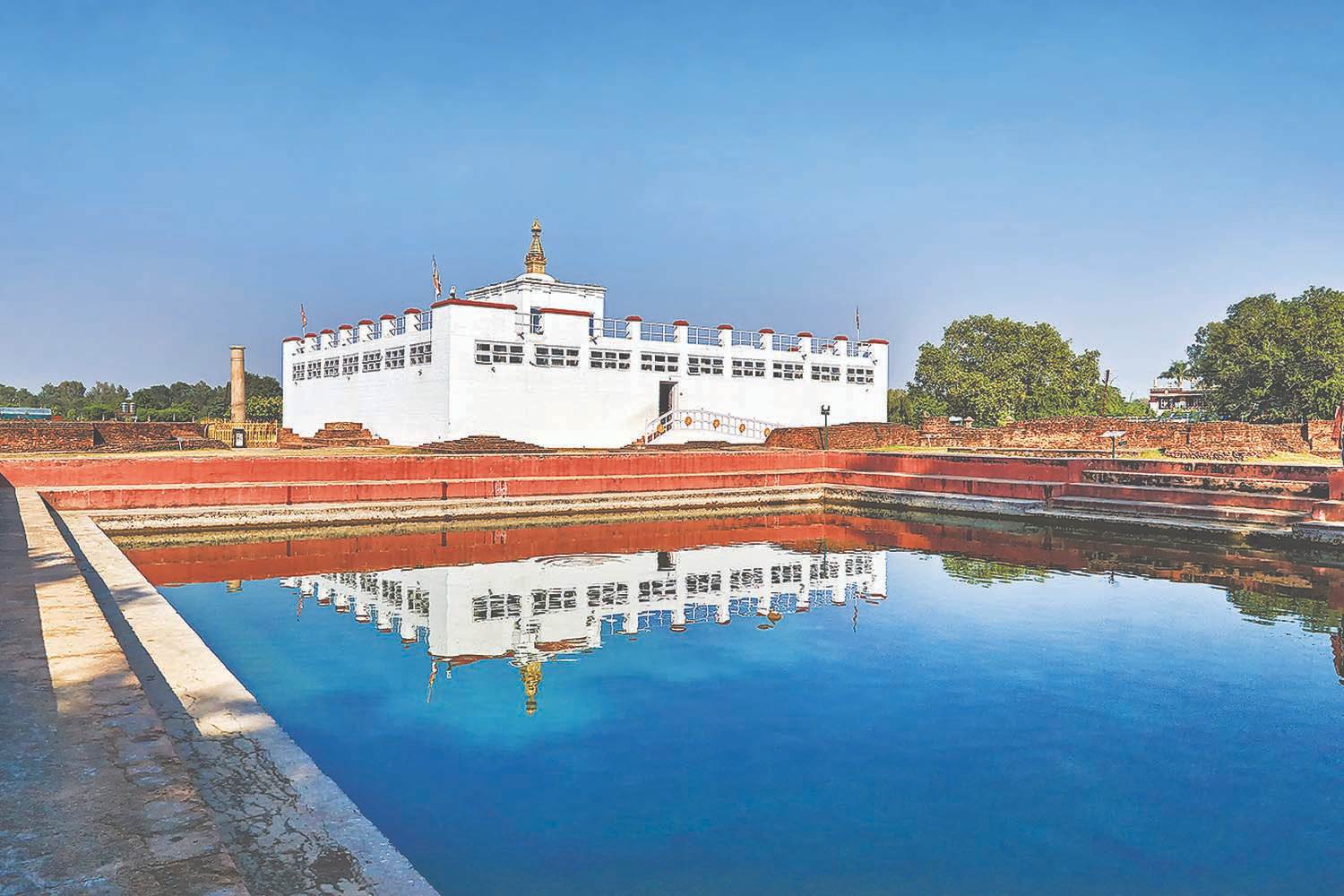Blogs

Lumbini: Birthplace of Gautam Buddha
Lumbini is a UNESCO World Heritage site and a sacred pilgrimage destination for Buddhists worldwide. It is located in the Rupandehi District of Nepal, near the border with India, approximately 22 kilometers west of the town of Siddharthanagar (formerly known as Lumbini) and about 290 kilometers southwest of the capital, Kathmandu.
Historical Significant
The history of Lumbini is deeply intertwined with the life of Siddhartha Gautama, who later became known as Gautama Buddha. Lumbini is renowned as the birthplace of Buddha and holds immense religious, historical, and cultural significance for Buddhists worldwide. The site's history can be divided into several key periods:
- Ancient Lumbini:
According to Buddhist tradition, Lumbini was a prosperous and important town during ancient times. Queen Maya Devi, the wife of King Suddhodana of the Sakya clan, is believed to have given birth to Siddhartha Gautama in Lumbini around the 6th century BCE. This event marked the beginning of Buddhism as a significant world religion. During this period, Lumbini was a part of the kingdom of Kapilavastu, the capital of the Shakya clan. - Asoka's Patronage (3rd century BCE):
The most critical turning point in Lumbini's history came when Emperor Ashoka of the Maurya Dynasty visited the site in the 3rd century BCE. He was deeply moved by the significance of Lumbini and the teachings of Buddha. As an ardent follower of Buddhism, Ashoka decided to promote the religion and establish various monuments and stupas at important Buddhist sites, including Lumbini. He erected a commemorative pillar, known as the Ashoka Pillar, with an inscription indicating the significance of Lumbini as the birthplace of Buddha. The discovery of this pillar in the 19th century played a crucial role in confirming Lumbini's historical importance. - Lumbini's Decline:
After the decline of the Mauryan Empire and the rise of subsequent dynasties in the Indian subcontinent, the significance of Lumbini waned, and the site gradually fell into obscurity. The region was eventually abandoned and buried under layers of vegetation and soil. - Rediscovery and Renovation (19th and 20th centuries):
Lumbini was rediscovered in the mid-19th century by the renowned archaeologist General Khadga Samsher Rana, who uncovered the Ashoka Pillar in 1896. This rediscovery brought international attention to the site, and efforts were initiated to restore and preserve Lumbini as a significant historical and religious monument. - UNESCO World Heritage Site (1997):
In 1978, Lumbini was designated as a UNESCO World Heritage Site in recognition of its outstanding universal value as the birthplace of Buddha and its profound impact on human history and culture. UNESCO's designation helped raise awareness about Lumbini's importance and contributed to its conservation and development. - Modern Developments:
In recent years, Lumbini has undergone significant developments and renovations to accommodate the growing number of pilgrims and tourists. Various countries have constructed their own monasteries and meditation centers within the Lumbini complex, making it a truly international pilgrimage destination for Buddhists.
Major Attractions
- Maya Devi Temple: The main attraction in Lumbini, the Maya Devi Temple, is built around the exact spot where Queen Maya Devi is said to have given birth to Siddhartha Gautama. The temple houses a marker stone that marks the precise birthplace of Buddha.
- Ashoka Pillar: The Ashoka Pillar, erected by Emperor Ashoka in the 3rd century BCE, stands as an iconic symbol of his pilgrimage to Lumbini and his reverence for Buddha's birthplace.
- Sacred Garden: The Sacred Garden surrounds the Maya Devi Temple and features beautiful landscaping, monasteries from different Buddhist countries, and the Puskarni Pond where Queen Maya Devi is believed to have bathed before giving birth.
- Lumbini Museum: The museum displays artifacts and archaeological findings related to the history and significance of Lumbini.
- Eternal Peace Flame: This eternal flame was established in Lumbini to symbolize peace and harmony, emphasizing Buddha's message of non-violence and compassion.
- Monasteries: Lumbini is home to numerous monasteries built by different Buddhist communities from around the world, representing various architectural styles and cultural traditions.
- Bodhi Tree: A descendant of the original Bodhi Tree in Bodh Gaya, under which Buddha attained enlightenment, is also found in the Lumbini complex.
Pilgrimage and Tourism
Lumbini attracts millions of Buddhist pilgrims and travelers from various parts of the world each year. It is not only a place of religious significance but also a center for learning and meditation. Visitors come to seek inspiration, contemplate, and pay their respects to the founder of Buddhism.
Here's how you can get to Lumbini:
By Air:
The nearest international airport to Lumbini is the Gautam Buddha International Airport (LUM) in Bhairahawa. Several domestic airlines operate regular flights to Bhairahawa from Kathmandu, the capital of Nepal. The flight duration is around 1 hour. From Bhairahawa airport, you can hire a taxi or take a local bus to reach Lumbini, which is approximately a 30-minute drive away.
By Road:
Lumbini is well-connected by road, and there are regular bus services from major cities in Nepal to Bhairahawa. Kathmandu, Pokhara, Chitwan, and other nearby towns have buses heading to Bhairahawa. The journey from Kathmandu to Bhairahawa takes about 7-8 hours, depending on road conditions and traffic. From Bhairahawa, you can take a taxi or local bus to Lumbini.
Entry Fees
| Nationality | Fees |
| Foreigners | NRS 500 |
| SAARC Nation (except India) | NRS 200 |
| Indian | NRS 40 |
| Nepali | NRS 20 |
| Nepali Student | NRS 10 |
| For use of Camera for Nepali & Indian (Additional amount) | NRS 50 |
Lumbini's serene ambiance, historical importance, and religious significance make it a must-visit destination for anyone interested in Buddhism, history, or simply seeking a peaceful and contemplative experience. The Nepalese government and local authorities have made efforts to preserve and develop the site to ensure its cultural and spiritual significance endures for generations to come.
